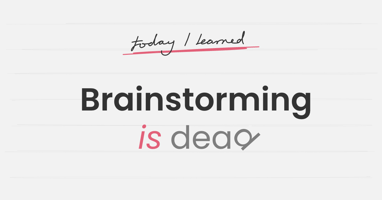Lately, it seems like most innovation writers scorn sustaining innovation, those incremental product changes that enable marketers to flag their products as New and Improved! Apple is everyone's poster child for its mastery of disruptive innovation and its ability to repeatedly invent new markets. CEOs exhort their teams to be like Apple: “Go and disrupt! Invent us a new growth engine!”
Harvard's Clay Christensen goes in a different direction. He believes there is an important role for sustaining innovation, but argues that companies must choose. They must specialize, for no one can successfully pursue both sustaining and breakthrough innovation strategies. One might suspect that small companies lack the resources to create new markets and that only large companies should pursue disruption. Counter-intuitively, however, Christensen argues that it is the established companies that should focus on sustaining innovations, while newcomers should focus on being disruptive.
Why? He writes in The Innovator's Solution:
“Because this [sustaining] strategy entails making a better product that they can sell for higher profit margins to their best customers, the established competitors have powerful motivations to fight sustaining battles. And they have the resources to win.”
Market leaders cannot risk losing their hold on the heart of the market. By fighting and winning safe battles repeatedly with incremental improvements, they continuously strengthen their leadership of the status quo. You want to launch a detergent? Good luck. You will never match Tide's brand power, formulation and packaging technologies, or influence over retailers. With each year's incremental improvement ( New and Improved!), they get even stronger.
But because market leaders are so focused on sustaining the status quo, they have no incentive to disrupt it. That, Christensen argues, opens the way for smaller, more nimble competitors, to change the game.
He argues that disruption usually begins from the low-end of performance; newly disruptive products are not usually good enough for the heart of the market. However, because they are generally less expensive and often more convenient, they attract new consumers to the market. Consider the motorbikes Honda launched in the U.S. in the early 60′s. They certainly did not interest the leather jacketed kings of the two-wheeled world. Yet Hondas were cheap and fun and spoke to young suburbanites in letterman jackets. They created a new market.
Could Harley or other incumbents have preempted Honda in the small bike market? Unlikely. Their management would have struggled to understand the economies of high volume, low margin production. And more important, launching products with low power would have diluted their brands' equity.
On the other hand, did Honda seriously threaten Harley's hold on the hog market? Not at all. Harley focused on sustaining innovation, incremental product improvements, and eventually emerged even stronger.
So is Christensen right that incumbents should practice sustaining innovation and leave disruption to newbies? Not entirely. What he misses is that market leaders, while using sustaining strategies in their core markets, often also succeed at disruption. How? They extend their brand. Harley changed the game by embracing licensing. Tide embraced Ultra liquids, pens, and pods. Conversely, every successful disruptor soon must learn to sustain.
Christensen is right: Focus on the type of innovation that best enables you to win. Yet, he's also wrong: The companies that succeed in the long-run master both disruption and sustaining. They build portfolios that prioritize one but include both. Like, for example, Apple. We're so dazzled by the latest i-gadget that we forget Apple is also a master of sustaining innovation. Year after year, they keep their products relevant by tweaking them to 2.0, 3.0 and beyond, long after they have ceased to be disruptive.
So yes, be like Apple. Balance your portfolio. Learn to sustain and disrupt and find your innovation sweet spot.





